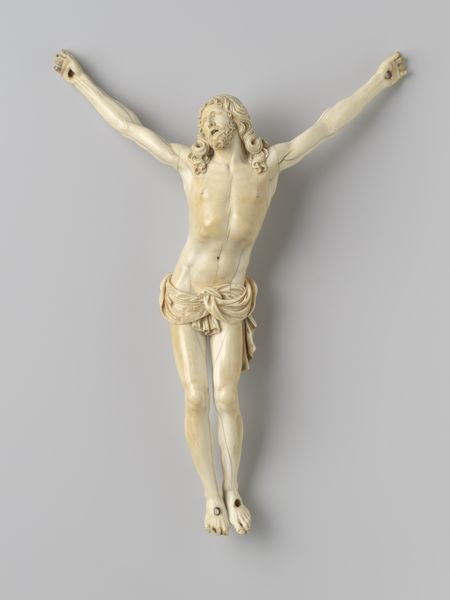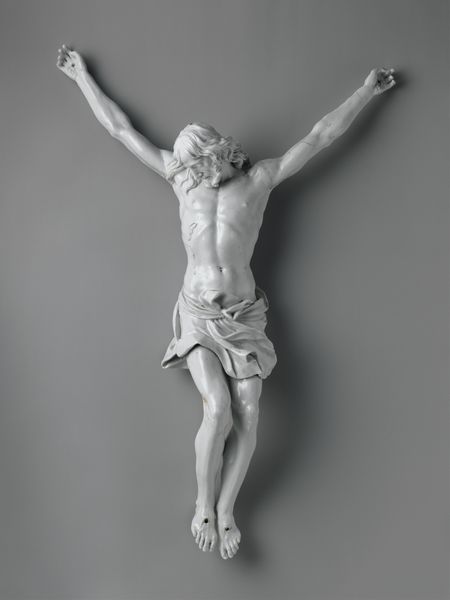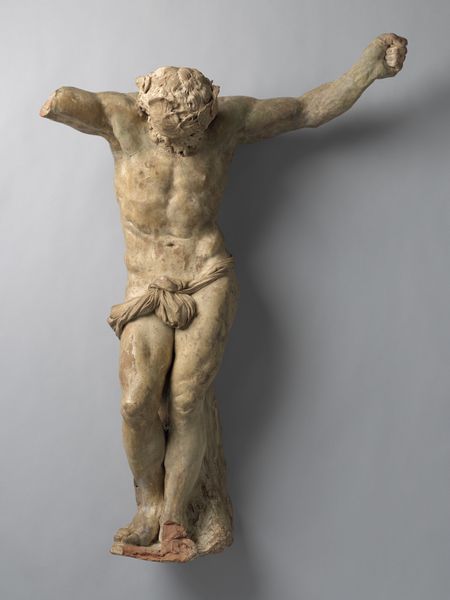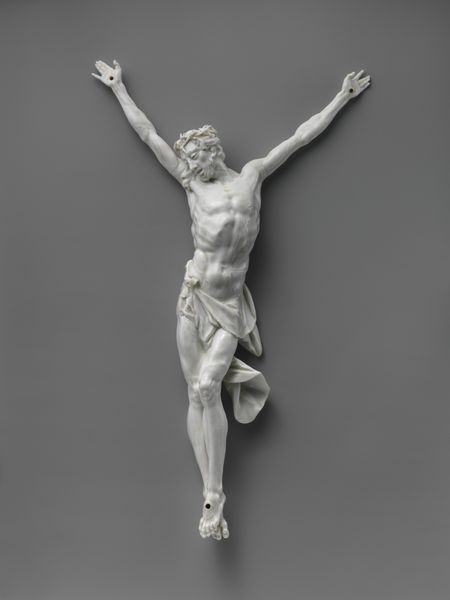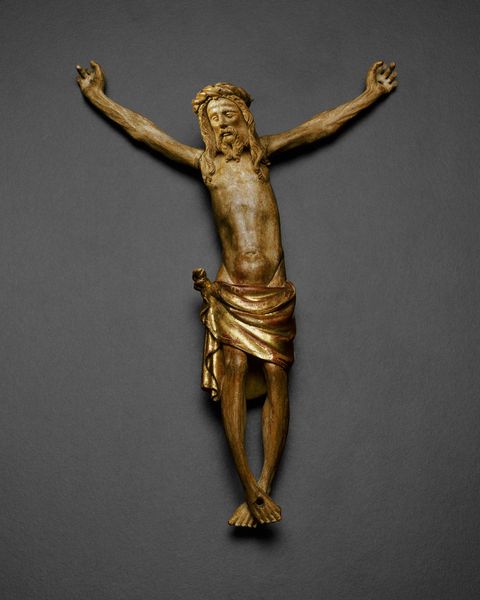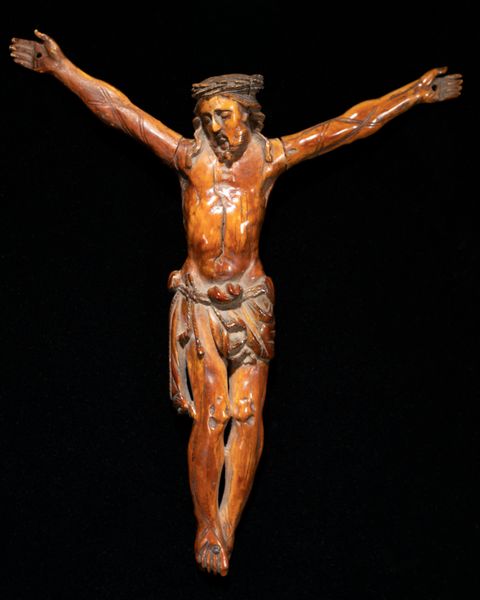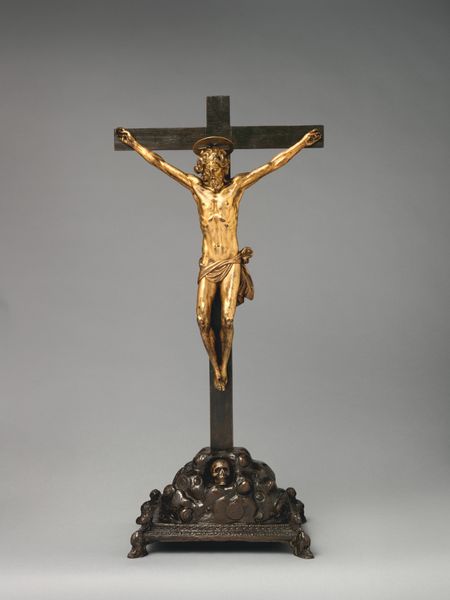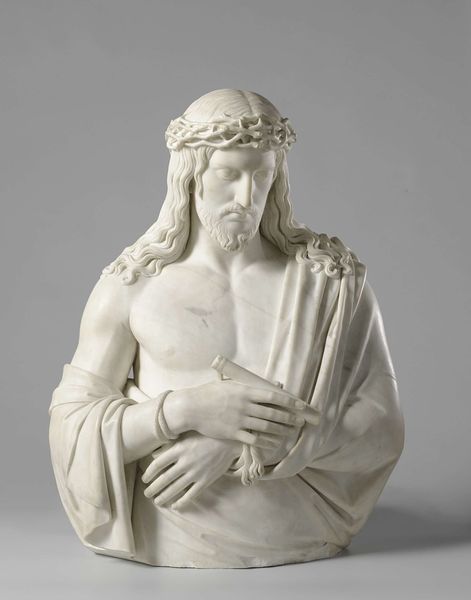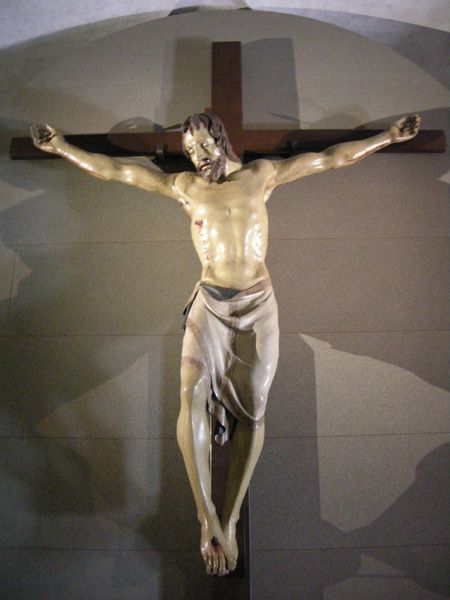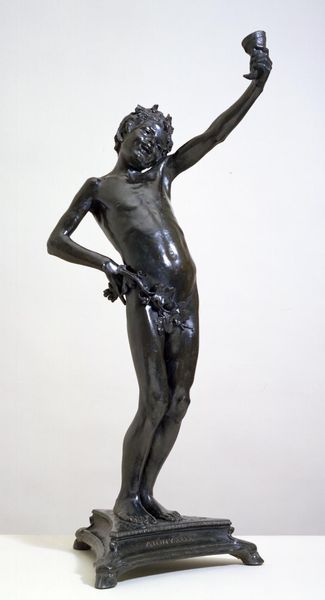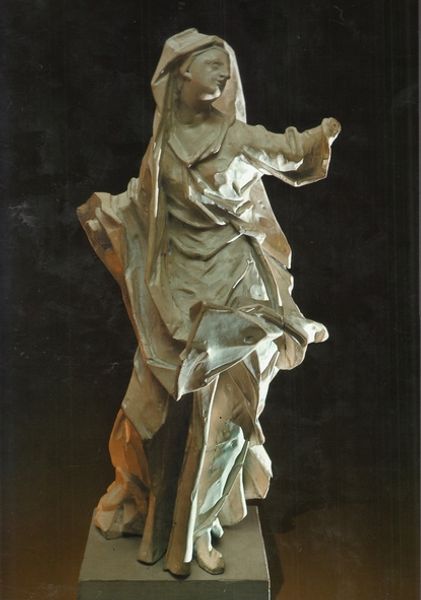
sculpture, ivory
#
baroque
#
sculpture
#
figuration
#
sculpture
#
history-painting
#
nude
#
ivory
Dimensions: 24 7/8 × 15 × 4 3/4 in. (63.2 × 38.1 × 12.07 cm)
Copyright: Public Domain
This sculpture, "Corpus", is an anonymous work depicting the crucifixion of Christ. The ivory body is mounted on a wooden cross. Historically, the image of the crucifixion was often used as a tool for conversion, and as a demonstration of power. Yet it simultaneously invokes complex themes around suffering, sacrifice, and redemption, which is part of what has made it so enduring. The tension inherent in this image is palpable: here is the suffering body, but it is rendered with a kind of serene beauty. The almost delicate carving of the ivory contrasts with the violence of the scene. What does it mean to aestheticize suffering, particularly in the context of religious devotion? The emotional resonance of the crucifixion is undeniable, and it is a feeling which transcends religious belief. The sculpture invites us to contemplate the boundaries between pain and beauty, and power and vulnerability.
Comments
minneapolisinstituteofart almost 2 years ago
⋮
With extraordinary anatomical precision, this sculpture focuses on the suffering of Christ, who is shown still alive and in extreme physical pain. Ivory was the material of choice for depictions of Jesus, not merely because it was an exotic material imported at great expense from southern Africa, but also because at this time the elephant was interpreted as a symbol of Jesus. This figure was carved out of an unusually large tusk of ivory, which determined the C-shaped movement that underscores the body’s suffering. The name of the Spanish artist who carved this work is unknown, but he carved at least two other sculptures of Christ on the Cross that we know of. One is in a museum in Florence, Italy. Another is still today in the church of Santa María in Guadalcanal, a village north of Seville, Spain.
Join the conversation
Join millions of artists and users on Artera today and experience the ultimate creative platform.
